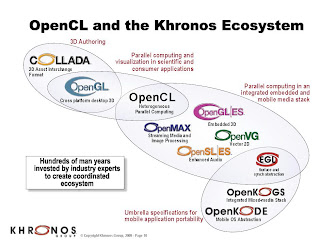
HALCON defines the state of the art in machine vision software. It provides a comprehensive vision library and is always based on the latest and most advanced technology. Whatever your task, HALCON will solve it, fast and with highest accuracy.
Vision Development Environment A professional image processing tool must be more than just a library of image processing operators.
Solving image processing tasks is just one part of a complete solution, which comprises other software components like process control or database access, and hardware components from illumination to image acquisition devices and many other mechanical components. Therefore, it is important that the image processing system is easy to use and can be integrated into the development cycle in a flexible
manner.
To achieve this, HALCON takes care of all important aspects:
• The software development is supported by HALCON’s IDE (integrated development environment),consisting of HDevelop and HDevEngine. HDevelop is a highly interactive development tool that enables a quick development of image processing tasks. Via HDevEngine, you can directly execute HDevelop programs and procedures from your C++, C#, Visual Basic, or C application. As an alternative, HDevelop can also export programs and procedures in your programming language.

• The problem-oriented documentation covers all levels from a quick access to important information up to a detailed discussion of advanced topics.
• These descriptions are combined with hundreds of examples for an intuitive understanding of the solutions, which can serve as templates to shorten the development time.
• Last but not least, HALCON provides open interfaces for efficient data exchange, to integrate own operators, or to access specialized hardware round off the system.
HALCON fulfills all requirements of a professional vision library:
• It comprises methods for all standard and advanced types of image processing from image acquisition from many different devices up to the advanced shape-based matching.
• Apart from image processing functionality, HALCON provides tools that are typically needed in the context of machine vision applications, e.g., for the communication via sockets or the serial interface, file handling, data analysis, arithmetic operations, or classification.
• HALCON offers flexible ways of parallelization to exploit multi-processor or multi-core hardware to speed up an application.
• The HALCON library that is used in an application will not be visible to the end user and requires only minimum resources in an installation, which makes it perfect for OEM developments.
Key Features
Leading-Edge Technologies In addition to the full set of standard machine vision methods, HALCON offers functionality that is outstanding in the field of machine vision libraries, e.g., 3D camera calibration, shape-based and componentbased
matching, subpixel-precise edge and line extraction, subpixel contour processing, reconstruction via binocular stereo, arbitrary regions of interest, and much more.
Apart from this, many methods that are known from other libraries are offered with a much better performance.
An example for this is the morphology, which is up to 100 times faster than in other products, and at the same time offers much more flexibility.
One Software for All Applications
Thanks to its more than 1300 operators, HALCON is at home in all areas of research, development, and production where images are processed and analyzed. Numerous customers all over the world already use HALCON to solve their machine vision tasks.
Protection of Investment By choosing HALCON, you choose independence: Switch to another operating system? HALCON supports a wide range of Windows, Linux, and UNIX platforms, including x64 systems. Migrate your applications from C++ to C#? HALCON can be used within various programming languages and environments.

Your application grows and needs more computing power? Switch to a multi-processor
or multi-core computer and HALCON will automatically parallelize its execution.
Last but not least, you are free to choose the image acquisition hardware that fulfills your requirements, because HALCON provides ready-to-use interfaces to a large number of image acquisition devices (analog, digital, IEEE 1394, CameraLink).
Rapid Prototyping
In many cases it is important to determine quickly if and how a problem can be solved. With HDevelop, HALCON’s interactive development environment, you can rapidly develop machine vision applications.
Besides being a fully-fledged program interpreter with debug functions, HDevelop assists you actively,e.g., by suggesting operators and by automatically visualizing the result of an operation.
With the help of integrated tools you can inspect images and results and quickly find suitable parameter values that solve your vision task.
Open Architecture
HALCON offers a comprehensive vision library but does not claim to be all-encompassing. Therefore, it is based on an open architecture. Thus, you can extend HALCON by integrating your own vision functionality in form of new operators.
And if you want to use an image acquisition device that HALCON does not yet support you can use the images directly or create an image
acquisition interface for it.


